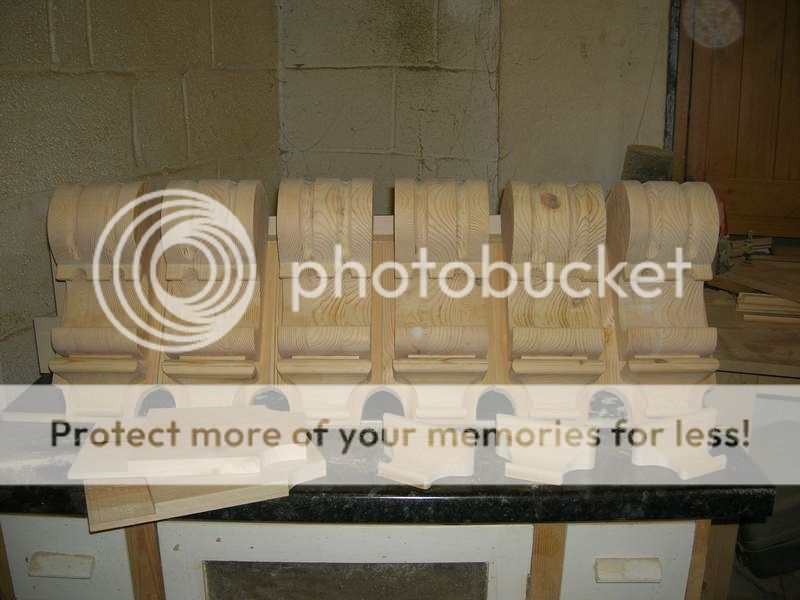ajayre
Established Member
I quite like the corbel shown below. What steps would be involved in making something like that? My guess (and I'm new to woodworking):
Bandsaw for the general profile
Bandsaw for the bottom shaping
Routed bead across the middle
Rosette cutter for the bottom design feature
What about the three vertical cuts and the scroll on the side? Could a jig be created for the scroll engraving?
Thanks, Andy

Bandsaw for the general profile
Bandsaw for the bottom shaping
Routed bead across the middle
Rosette cutter for the bottom design feature
What about the three vertical cuts and the scroll on the side? Could a jig be created for the scroll engraving?
Thanks, Andy




































